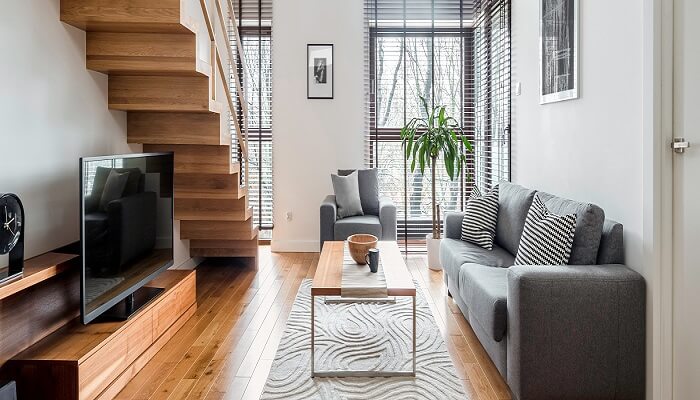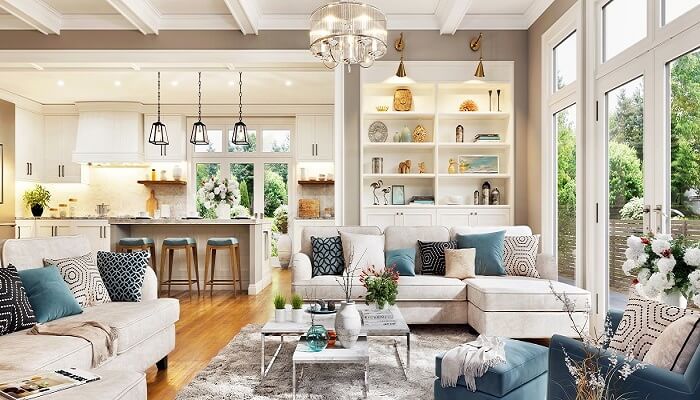Clean, simple lines; natural materials and textures; and neutral colours – all these characteristics define both ‘modern’ and ‘contemporary’ spaces, and many people use these words interchangeably. Even a thesaurus supports this interpretation.
However, for many interior designers and modern furniture stores, they refer to two distinct design styles.
The Differences Between Modern and Contemporary Furniture Design
It can be difficult to differentiate between modern and contemporary furniture designs, especially because they look so similar to anyone who isn’t an expert. Although these two decor styles share traits, there are some stark differences. Let’s take a look at them.
Different Time Periods
Contemporary furniture design refers to what’s being created and manufactured right now. Its features are dynamic, which means it’s constantly evolving. In short, contemporary designs do not have one specific style. It’s more about what’s trending and borrowing bits and pieces from a range of designs and eras. A few qualities that help define the contemporary style are neutral palettes, stark minimalism, clean lines and organic silhouettes.
Modern furniture designs specifically refer to the architectural fashion that was popular between the early 1900s and 1950. Comfort, bold lines, warm woods, and symmetrical designs ruled this era.
While both are inclined towards clean shapes and lines, contemporary designs sometimes feature curvier furnishings. The main reason these two terms are used interchangeably is that many of the characteristics of modern design (i.e. mid-century modern or retro) are trending now.
Different Use of Materials
At the peak of the mid-century era, many furniture designs had an industrial edge. This was apparent in the materials used in manufacturing those pieces, such as natural hardwood (especially walnut and plywood), stone, leather, chrome, acrylic and moulded plastic.
Contemporary furniture designs, on the other hand, combine polished woods, sleek metals (like steel and chrome) and natural-fibers. You may also come across some furniture pieces made from materials like travertine, plaster and concrete. Some good examples of contemporary furniture include lacquered wood cabinets, marble-cube tables, galvanized steel pendants, and sculptural white/black chairs with cut-outs that add visual impact.
Different Colour Palettes
Modern furniture designs mostly feature earthy tones and bright primary colours like red, blue and yellow. The use of these colours date back to creations during the art movements of the early and mid-20th-century, as seen in the paintings of Piet Mondrian.
Meanwhile, contemporary furniture designs mostly consist of bright white tones, shades of gray, and black notes, often accented with bright and bold colours that play against neutrals. Bold warm browns and creams are often paired with wood, stone and tile for a cozy feel. White walls and monochromatic furniture make a great pair in contemporary settings, as they can make a space appear more airy and spacious.
Different Ambience
Modern furniture pieces often have an earthy feeling that comes from their warm neutral shades, natural materials, wood tones, and streamlined, vintage-style designs. They evoke a sense of everyday ease and comfort that’s difficult to find with other styles. Contemporary furniture designs, by contrast, often evoke a less-is-more feeling that doesn’t necessarily mean bare and minimal.
The Similarities Between Modern and Contemporary Furniture Design
Both modern and contemporary furniture styles tend to feature simple, sleek designs; clean lines; a neutral colour palette; and artistic flair. Together, they create a warm and calming atmosphere that’s perfect for relaxing. They neither use ornate designs or nor heavy elements, which makes them ideal for minimalistic homes as well. In both styles, chairs, sofas and ottomans have exposed legs. They often feature reflective materials like glass and metal. You’ll also notice a lot of bare wood in both designs, from structural beams to solid wood tables with metal parts. While both styles may have artistic touches, neither features anything overtly detailed or ornate.
How to Choose Between Modern and Contemporary Furniture
Modern design is all about the architectural elements of the period between 1900 and 1950. That means it’s most suited to someone who enjoys a single design theme, specifically that era’s clean lines and warm, natural colours.
Contemporary design is more suited to those who prefer trends and adapting to new innovations. Do you like the stark contrasts and curved lines so common in contemporary furniture design? Then it’s definitely the right choice. Whether you want to create a modern space, a contemporary one, or a combination of both, the decision depends on your taste, budget and style.



